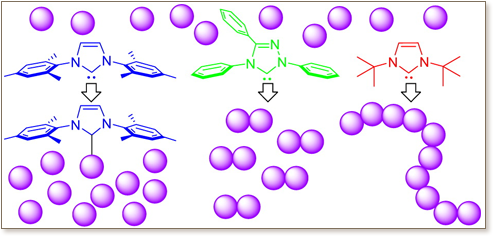
This contribution presents a full account of experimental and theoretical/computational investigations into the mechanisms of chain initiation, propagation, and termination of the recently discovered N-heterocyclic carbene (NHC)-mediated organocatalytic conjugate-addition polymerization of acrylic monomers. The current study specifically focuses on three commonly used NHCs of vastly different nucleophilicity, 1,3-di-tert-butylimidazolin-2-ylidene (ItBu), 1,3- dimesitylimidazolin-2-ylidene (IMes), and 1,3,4-triphenyl-4,5-dihydro-1H-1,2,4- triazol-5-ylidene (TPT), and two representative acrylic monomers, the linear methyl methacrylate (MMA) and its cyclic analog, biomass-derived renewable γ-methyl-α-methylene-γ-butyrolactone (MMBL). For MMA, there exhibits an exquisite selectivity of the NHC structure for the three types of reactions it promotes: enamine formation (single-monomer addition) by IMes, dimerization (tail-to-tail) by TPT, and polymerization by ItBu. For MMBL, all three NHCs promote no dimerization but polymerization, with the polymerization activity being highly sensitive to the NHC structure and the solvent polarity. Thus, ItBu is the most active catalyst of the series and converts quantitatively 1000-3000 equiv of MMBL in 1 min or 10 000 equiv in 5 min at room temperature to MMBL-based bioplastics with a narrow range of molecular weights of Mn = 70-85 kg/mol, regardless of the [MMBL]/[ItBu] ratio employed. The ItBu-catalyzed MMBL polymerization reaches an exceptionally high turnover frequency up to 122 s -1 and a high initiator efficiency value up to 1600%. Unique chain-termination mechanisms have been revealed, accounting for the production of relative high-molecular-weight linear polymers and the catalytic nature of this NHC-mediated conjugate-addition polymerization. Computational studies have provided mechanistic insights into reactivity and selectivity between two competing pathways for each NHC-monomer zwitterionic adduct, namely enamine formation/dimerization through proton transfer vs polymerization through conjugate addition, and mapped out extensive energy profiles for chain initiation, propagation, and termination steps, thereby satisfactorily explaining the experimental observations.
10.1021/ja4088677